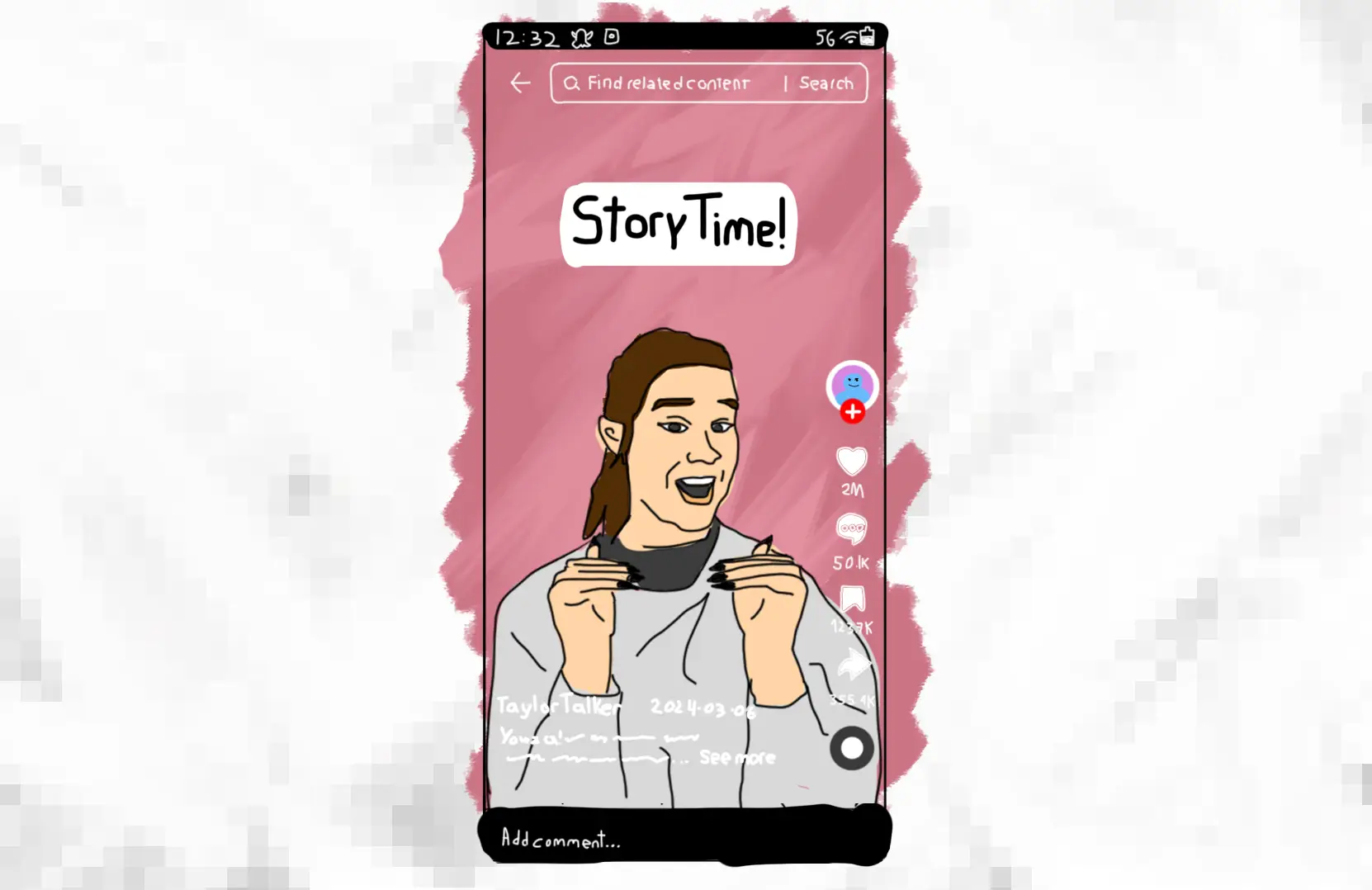“Storytime: my ex ruined his life and I’m buzzing about it,” TikTok user tattylomas’s post is titled. She launches into a story about how her ex cheated on her and ruined his life. These storytime TikToks are extremely popular, ranging from how they lost their job to their crazy trip going to Walmart.
Storytime TikToks are wacky or interesting stories that are told directly to their camera, which mimics a face-to-face conversation — some are told with text with the game, Subway Surfers running in the background.
Dani Dean, a MacEwan studio arts student, usually gets the TikToks with the Subway Surfers running in the background on her feed. Dani’s sister, Alysha Dean, a social work student, also gravitates towards those kinds of TikToks. “It’s like every other video I see versus in 2020, it was the funny dances, and now it’s a lot of storytime,” she says.
Many storytime TikToks are not necessarily labelled as “storytime” or have the hashtag. Many of them tend to have multiple parts, which is likely to increase the amount of views on videos because TikTokers make money based on the amount of views. While TikTok’s Creator Fund doesn’t explicitly say how much TikTok Creators make, other websites say that TikTok pays between 2 to 4 cents per 1000 views. So, if you can manage to get a million views, you could earn, like, $20!
Some people may wonder what catches viewers’ attention in these stories.
“The format of it,” Dani Dean says. “It’s also just an interesting story where you’re looking for part two afterwards when it comes up.”
Alysha Dean credits the shock factor of these stories, “Well, I want to know what happens next… I keep listening to it and it’s also the visual stimulus. I have something to watch while I’m processing what they’re saying,” she says.
The real question becomes: Why do we tell stories?
“We tell stories because we are human. But we are also made more human because we tell stories. When we do this, we tap into an ancient power that makes us, and the world, more of who we are: a single race looking for reasons, searching for purpose, seeking to find ourselves,” Amanda Gorman writes in a New York Times article.
To tell stories is to be human. From a sociological perspective, storytelling comes from an urge to talk about and understand the world. As humans we have told stories for as long as we could speak. It’s a way to build connections in our community and simply pass the time. We tell stories through movies, novels, and by talking to one another. Christine Hennebury said it best in a CBC news headline: “Storytelling is not just entertainment. It’s a fundamental part of being human.”
The storytime style of TikToks are not likely to go anywhere, besides being shocking and attention-grabbing. They also appeal to our very nature — who doesn’t like a good story?





0 Comments